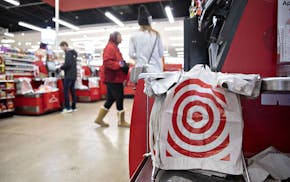By JULIE LASKY • New York Times
Growing up in the West African country of Togo, Mansour Ourasanah knew what it was like to be hungry. But he assumed that limited food was a universal misfortune, like a head cold or a broken heart. Eventually he discovered that plenty of food was available for people with money; it was just that his family was poor.
Now 28 and an industrial designer in Chicago, Ourasanah has tried to startle others into new ways of thinking about food. Last month he won a $35,000 Vilcek Prize for Creative Promise for Lepsis, his handsome prototype for a system that breeds grasshoppers for consumption.
Today, designers are playing with food in growing numbers. Equipped with new technologies, motivated to solve problems of scarcity, obesity and waste, and encouraged by rocketing culinary enthusiasms, they are recalibrating our ideas of taste while preparing science-fiction scenarios for our kitchens. Once you have reared your grasshoppers, for instance, Susana Soares, a designer and researcher in London, has a plan for what you can do with them. Her Insects Au Gratin project involves grinding bugs into a powder that is mixed with cream cheese or butter and flavorings. "They are a very efficient way of getting protein, if you look at them in a rational way," she said. But because people are more likely to regard bugs with disgust, Soares uses a 3-D printer to turn the paste into decorative squiggles or filigreed blobs. "They look like jewelry," she said.
The practice of shaping the tools and rituals associated with eating dates from the first use of a twig to tease grubs from a hole, or the first folded leaf used to scoop water from a stream. But only in the last 15 years or so has a discipline known as "food design," or sometimes "eating design," emerged.
If anyone began this latest wave, it was Martí Guixé, a Catalonian who in the late '90s began circulating ideas for tapas that could be eaten in what he called "extreme conditions" — underwater, for example — and cakes iced with pie charts that divulged the proportions of their ingredients.
Food design has blossomed into a famed workshop in culinary design led by Marc Bretillot at the ESAD art and design academy in Reims, France. The subject has also inspired a Cooper-Hewitt National Design Museum exhibition in the works for 2016. It has taken strong purchase in the progressive design culture of the Netherlands, where young designers like Jihyun Ryou and David Artuffo are working out elegant ways to extend the life of refrigerated food and to raise consciousness about vanishing produce.
Food design attracts a wide field of participants; not everyone has a taste for sea urchin or brains, but almost everyone has experienced a passion for food and the bond that comes with sharing it. Scratch a food designer and you'll find an architect, engineer, interaction designer, materials scientist, artist or crafter, or more likely some combination working together.
At the higher end of the technology spectrum is the partnership between David Edwards, an American scientist and inventor who founded Le Laboratoire, what he calls "a cultural lab," in Paris, and eminent French designers. Several years ago, having introduced a chocolate product called Le Whif, which you enjoy guiltlessly by inhaling, Edwards, along with Bretillot and the industrial designer François Azambourg, rolled out Le Whaf, a carafe that vaporizes liquid, creating a cloud of tiny droplets that is poured into a glass and swallowed.
"I'm interested in this sort of virtualization," Edwards said recently. "So much of a great culinary experience is sensorial in a way that goes beyond caloric content."
In another project, Edwards and Azambourg set out to erase wasteful packaging. Borrowing from the idea of the grape and similar naturally self-contained foods, he developed WikiPearls, round pieces of ice cream wrapped in edible skins.
Ourasanah is working for Whirlpool on blue-sky projects, thinking up ways to teach American children to respect food and nutrition. His new medium is the lunch tray and lunchbox, which he sees as failed design opportunities in their existing forms. "I saw a lunchbox that had SpongeBob SquarePants on it," he said. "What does SpongeBob have to do with food?"

Faced with possibly paying for news, Google removes links to California news sites for some users

Xcel, UND say Midwest hydrogen 'hub' at risk from tax credit rules
State says 10 water systems in the metro have unsafe levels of PFAS, under new EPA rule

Drought, heat raise the risk of a repeat of Canada's record-breaking wildfires last year

